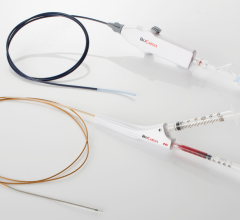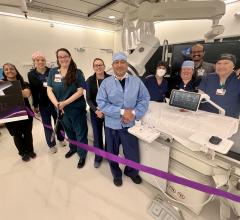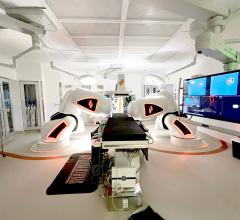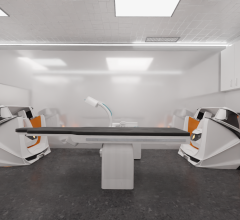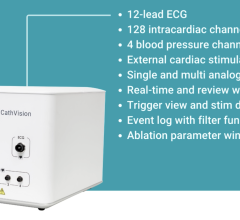
Figure 1: Picture of the Emblem S-ICD Subcutaneous Electrode with an arrow showing where separation usually happens (distal to the proximal sense ring).
February 2, 2020 — The U.S. Food and Drug Administration (FDA) has identified a recent recall of the Boston Scientific Emblem S-ICD subcutaneous electrode as a Class I recall.
Boston Scientific is recalling the subcutaneous-ICD systems electrode because of increased risk of fractures in the area distal to the proximal sense ring, shown in Figure 1. If the device fractures during use, it could become unable to deliver therapy to slow very fast heartbeats from cardiac arrest (tachycardia). The FDA said a failed device may cause serious adverse events, include injury or death if cardiac arrest cannot be treated. The FDA said there is also risk for additional surgery to replace failed device leads.
The FDA said there have been 27 complaints about this device issue, and 26 reports of serious injuries. One death was also reported.
Read the FDA's Feb. 2, 2021 recall notice
The Model 3501 electrode is part of the Boston Scientific S-ICD System. The device is an implantable cardioverter defibrillator (ICD). It is innovative because it is the first ICD system that does not use leads that run through large veins from the surgically implanted device into the heart. Instead, a lead is implanted just under the skin along the sternum in a minimally invasive procedure.
The recall includes all 19,919 devices manufactured from March 2016 and November 2020, and distributed between June 2017 to November 2020.
Boston Scientific recommends replacing any electrode that is shown to have breaks with signs like artifacts, high impedance alert, or based on X-ray imaging. The company said routine replacement of an electrode without evidence of breaking is not recommended.
The company said it wants all explanted devices returned to Boston Scientific for evaluation.
Recommendations for Patients With Recalled Emblem S-ICD Systems
On Dec. 2, 2020, Boston Scientific sent an important medical device advisory letter to all affected customers with recommendations for prompt identification of devices at risk for electrode body fracture.
Read the Boston Scientific recall letter.
Recommendations were offered to help physicians and patients evaluate the risks of using affected devices compared to replacing them. Care for recalled devices at risk for failure were provided:
• Enroll and monitor patients through Latitude remote monitoring to detect any alerts or artifacts on the devices in between office device checks.
• Ask patients to do weekly remote checks.
• Perform a system follow-up every three months by remote or in-office checks.
• Assess sensing performance in-clinic if any of the following is observed:
- Non-physiologic, mechanical artifacts
- If artifacts are found, this may be a sign of an electrode body fracture.
- High electrode impedance alerts.
• Capture all sensing vectors that may indicate onset of electrode body fracture such as:
- Cardiac signals on the S-ECGs of the primary and secondary sensing vector that look nearly identical
- Flatline S-ECGs in the alternate sensing vector
• Review stored devices for artifacts, as this may be a sign of potential electrode body fracture.
• Perform a chest radiography of the entire electrode length if there is a suspicion of a break.
- In the absence of any indications of electrode fracture, surveillance X-rays are not recommended.
• Demonstrate the device beeper to the patient during the next office visit.
– For patients not monitored by Latitude, repeat the beeper demonstration following any MRI scan, as strong magnetic fields may cause permanent loss of beeper volume
– Remind all patients to quickly contact their physician if beeping tones are heard from their device or if a shock is delivered.
• Evaluate the risk for life-threatening harm due to an electrode body fracture. This is greatest for patients who:
– Have a history of life-threatening ventricular arrhythmias such as secondary prevention
– Are unable to be reliably followed remotely or in person every three months
– Are not monitored via LATITUDE and are unable to hear beeping tones
• Replace any electrode that is shown to have breaks with signs like artifacts, high impedance alert, or X-ray results.
Customers who have questions about the notification should contact their local sales representative or the Boston Scientific Technical Services team by phone at (800)-CARDIAC (227-3422) or by emailing tech.services@bsci.com.
Related S-ICD Content:
VIDEO: How to Install a Subcutaneous ICD System
VIDEO: Top New EP Technologies at Heart Rhythm Society 2020 — Interview with Andrew D. Krahn, M.D.
UNTOUCHED Trial Data Underscores Safety And Efficacy Of Boston Scientific S-ICD System
Head-to-head Comparison Shows Subcutaneous ICDs Safer Than Transvenous Defibrillators
The Future of Cardiac Rhythm Management Device Technology
New Technology and Market Challenges Facing Implantable Cardioverter Defibrillators
Emblem Subcutaneous ICD Safe and Effective for Majority of Patients
VIDEO: Overview of Subcutaneous ICD Technology — Interview with Lucas Boersma, M.D.

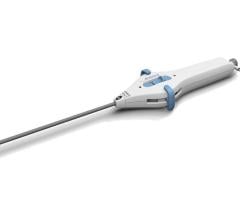
 July 31, 2024
July 31, 2024 
